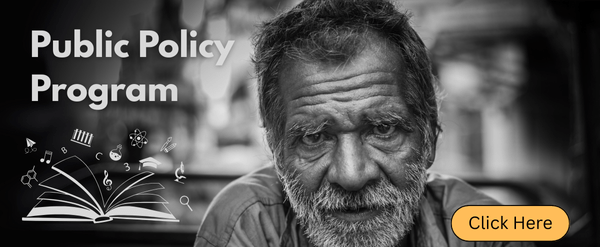Rebeka Shaw, Aayushi Rai, Niyati Kotiyal, Ravi Ranjan Kumar, Kushi N Jain Introduction In today’s hyper-connected world, digital devices are woven into the fabric of childhood from an early age. What once began as a tool for education and entertainment has evolved into a constant presence in children’s lives, shaping how they learn, play, and interact with the world. While technology offers undeniable benefits like interactive learning and easy access to information, its unregulated use has raised red flags about developmental and mental health risks. Studies suggest that excessive screen time, especially passive viewing, can hinder language development, disrupt sleep, and increase impulsivity and attention deficits. The constant stimulation from digital content and notifications can fragment children’s focus and impair their ability to concentrate on academic or social tasks. Sleep disturbances, often triggered by nighttime screen use, further compound these effects by affecting memory and emotional regulation. Psychological theories, such as Jean Piaget’s, remind us that active, hands-on interaction is crucial for cognitive growth. But in a world where screens replace physical play, these foundational experiences are often compromised. Add to that modern parenting pressures, urban routines, dual incomes, and digital babysitting, and the developmental equation becomes even more complicated. Adolescents, too, are facing the fallout. According to the WHO, nearly 14% of youth aged 10-19 suffer from mental health issues, with suicide ranking alarmingly as the fourth leading cause of death in this age group. And yet, health systems, especially in India, remain underprepared, with pediatric care often overlooking digital exposure as a root cause of behavioural challenges. The need for awareness, moderation, and informed strategies becomes urgent as AI-powered tools and digital content become increasingly embedded in childhood environments. In this digital era, the question isn’t whether children should use technology, but how, when, and how much. Navigating this terrain requires conscious parenting, evidence-based guidelines, and a healthcare system equipped to recognise emerging developmental patterns. The way we manage children’s digital exposure today will shape not only their mental health and learning capacity but also the very fabric of tomorrow’s workforce and society. Literature Review Mobile-based child health monitoring has emerged as a critical tool in strengthening maternal and child healthcare in India, particularly through initiatives like the POSHAN Tracker, Reproductive and Child Health (RCH) Portal, and the broader National Digital Health Mission (NDHM). Literature highlights the success of mHealth tools in enhancing immunisation tracking, antenatal/postnatal care, and nutritional monitoring. However, challenges persist in digital access, especially across rural and low-literacy populations. Studies in sociology emphasise the role of gender norms, caste hierarchies, and community trust in influencing the adoption of digital health tools. From a psychological perspective, user motivation, technology-related anxiety, and behavioural inertia impact usage by caregivers. Urban planning and sustainable urbanism literature underlines the infrastructural divide in health service delivery between urban slums and peri-urban areas. Meanwhile, public policy research critiques the fragmented implementation of digital health schemes, stressing the need for convergence and capacity-building among frontline health workers. Business and management studies focus on the scalability and sustainability of mobile platforms, highlighting the role of public-private partnerships in health tech ecosystems. The interdisciplinary review reveals that while technology offers promising solutions, socio-cultural, behavioural, infrastructural, and governance dimensions must be integrated for effective and equitable child health monitoring. Objectives of the Study The increasing integration of digital technologies into parenting, ranging from mobile-based child health monitoring applications to AI-assisted caregiving tools, has transformed the way early childhood is experienced and managed. Particularly after the COVID-19 pandemic, the reliance on screens for both caregiving and entertainment has grown significantly, leading to critical questions about its long-term impact on children’s mental, emotional, and cognitive development. This study aims to explore these complex dynamics within the Indian context, focusing on five core objectives: • To assess the developmental consequences of early and excessive screen exposure on infants and young children (aged 0–5 years), with attention to delayed speech, emotional dysregulation, attention disorders, and emerging symptoms associated with “virtual autism.” • To evaluate the role of digital tools, including mobile-based health tracking apps and AI-powered parenting assistants, in modern caregiving practices. This includes identifying both their benefits in health monitoring and the risks of digital overdependence. • To examine the readiness and responsiveness of India’s pediatric healthcare and early childhood education systems in identifying, diagnosing, and managing screen-related developmental concerns. This involves assessing gaps in infrastructure, training, and awareness. • To explore the extended social and behavioural consequences of early digital immersion, especially its correlation with adolescent impulsivity, risk-taking behaviours (including substance abuse and poor reproductive health awareness), and future workforce competencies. • To propose integrated policy-level recommendations that address parenting practices, pediatric healthcare protocols, public awareness strategies, and organisational preparedness for managing the digitally-formed generation. By addressing these objectives, the study seeks to provide a multidimensional understanding of how digital parenting is reshaping childhood and society at large. Findings and Discussions: Insights into Parenting and Developmental Issues In today’s hyperconnected world, digital devices are transforming not only how adults work and socialise but also the earliest stages of childhood development. Increasingly, children are being introduced to screens long before their first words, raising growing concerns among health professionals, educators, and parents. Emerging evidence, including from Indian pediatric practices, suggests that excessive screen time in early childhood is linked to delays in speech and social development, emotional regulation difficulties, shortened attention spans, and even autism-like symptoms in some children. This article explores the issue through three interrelated lenses: parenting practices, developmental impacts, and public health system readiness, supported by real-life case studies from India. Digital Babysitting and Parenting Practices Modern parenting is shaped by time constraints, nuclear family setups, and growing dependence on digital tools. With dual-income households and long work hours becoming the norm, especially in urban India, many parents rely on digital devices to manage childcare gaps , a trend often referred to as digital babysitting. In urban homes, devices are frequently used to pacify toddlers during meals, chores, or downtime. In semi-urban and rural areas,










